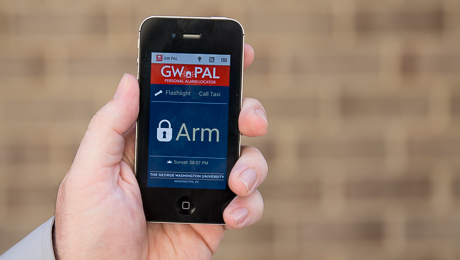By James Irwin
Educational videos that emphasize the steps students, faculty and staff can take before and during potentially threatening situations were released by the Office of Safety and Security and the university’s threat assessment team on Wednesday.
The videos, which outline paths to violent behavior, provide methods members of the university community can use to identify warning signs and prevent workplace and campus violence, as well as steps they can take to protect themselves if a violent event occurs.
“The overall purpose here is to make people aware of potentially threatening situations and what they can do to protect themselves and alert the proper public safety officials or administrative staff,” said Darrell Darnell, senior associate vice president for safety and security. “Unfortunately, in today’s society, we’re not going to be able to eradicate workplace violence. What we can do is educate people to signs of behavior that may lead to it.”
The videos, one for students and one for faculty and staff, are 30 minutes long and are available to view online on the Division of Information Technology’s SkillPort website. The Office of Safety and Security and GWPD are available to conduct live presentations of the videos with question-and-answer sessions upon request.
Each video walks through the steps that often precede a violent episode (called a “flashpoint”), beginning with a person exhibiting behaviors of concern—including aggressive conduct, intimidation, bullying or signs of prolonged sadness—and escalating to verbal or physical threats and violence.
The path to violence is almost always an evolutionary one, the video explains, and often involves a trigger event—a firing, layoff or workplace reprimand, academic struggles, financial trouble or family death are a few examples. It is important, Mr. Darnell said, to be observant of concerning behavior and possible triggers.
“If you are unsure in a situation where there may be some different behaviors that are unsettling, try and talk to the person to see if anything is going on that you can help with,” he said. “You can make them aware of resources we offer that can help them.”
Those resources include the GW Employee Assistance Program, the University Counseling Center, the Office of Student Rights and Responsibilities and the GW CARE Network.
“There are also many people around campus here to help,” said Peter Konwerski, vice provost and dean of student affairs. “Faculty, librarians, academic advisers and other professional staff are available. There’s also peer support, through our resident advisers, orientation staff and other student leaders. Peer-to-peer support is often something students appreciate and respond well to.”
In a situation where concerning behavior continues and escalates, Mr. Darnell said, there could come a point where observations need to be reported. At GW, this could mean bringing the issue to a supervisor, faculty adviser, human resources client partner or GWPD, depending on the sense of urgency.
In the event of an imminent threat of violence, such as an active shooter on campus, two things become paramount, he said: safety and reporting.
“People need to know how to take care of themselves and those around them, whether that’s to shelter in place or run away from the danger,” Mr. Darnell said. “The second is to make sure you report it as quickly as you possibly can to GWPD or 911.”
The university released a safety and security mobile app, GW PAL, in August that allows users to send rapid, location-specific alerts to the campus police dispatcher. Having a plan and a survival mindset, Dr. Konwerski said, can help save lives during an emergency situation.
“Being prepared is always a smart strategy,” he said.



